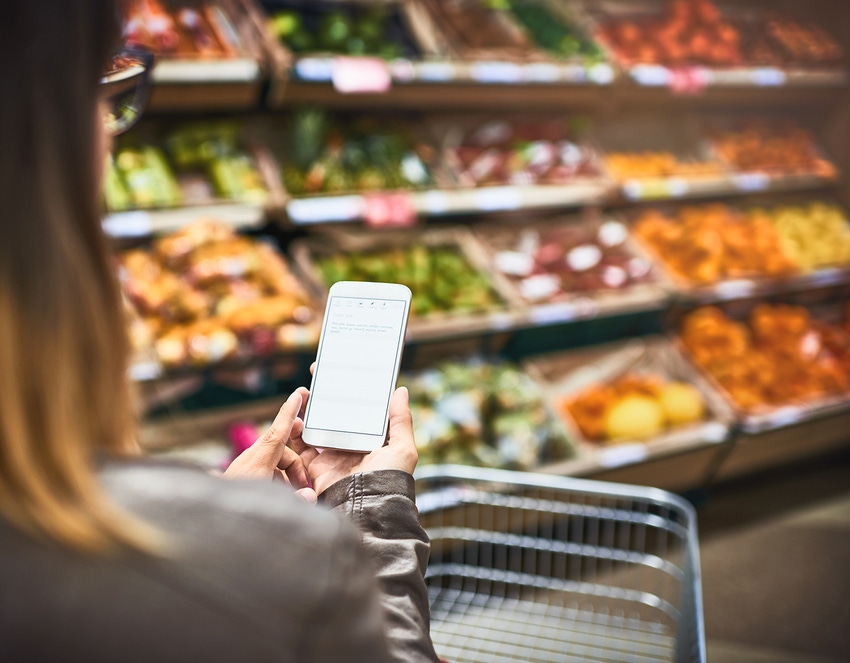Businesses must adapt as consumers now have a virtual identity and a physical identity.

There is an incredible amount of technological change happening, and decade’s worth of research show that society is in a period of change that is substantially different from any other period in history, Leonard Brody, chairman of Creative Labs, told attendees at the 2019 Meat Conference held recently in Dallas, Texas. Essentially, Brody said society is experiencing a rewrite, which is typically measured by a 38% shift in consumer or communication behavior globally.
The first rewrite began in 1750 with the Industrial Revolution, but the current rewrite, known as “The Great Rewrite,” began in 2007.
“This is a very different historical period than we’ve been through before,” he said. “You are literally in a moment of time where we are rewriting this planet from the ground up.”
The best way to think about it, he said, is as a complete resetting of the operating system of our world and our planet; “thinking of it as anything smaller than that would be a mistake.”
The shift isn’t just about technology, though. “The mistake that people are making is thinking that this period is about technology, innovation and disruption. It is not. It is a part of the story,” Brody explained.
The current rewrite is a story of the greatest human adaptation to our environment and institutional shift in the history of our species, Brody said.
In the world now, trying to plan past 730 days is going to be difficult. There’s going to be so much change over the next two years, he said, so “it’s best to keep our focus and lens at that horizon.”
How does one respond to this environment?
According to Brody, we are living in the greatest era of human abundance and freedom ever seen historically.
The internet has played a key role since 1996 as it has allowed, for the first time in the history of humanity, people to own their own communication at mass scale on a global level. “This was not true prior to 1996,” he said. “It is the first time in history, where millions of people can speak to millions of other people with no disposable impact to their income and impossible for governments to regulate.”
This is important because, at around the turn of 1995 and 1996, when everyone began using the internet, individuals bifurcated into two people.
Furthermore, the development is ageless, genderless and not specific to any one demographic, Brody explained. In fact, it only has to do with one factor: Do you use the internet?
“If you are on the internet, you are two people. This is really important for marketers to understand, because it has been the failure of marketers for about 20 years,” he said.
According to Brody, people now consist of a physical person — the person you are in face-to-face interactions with other people — and a virtual person — the person you are in non-face-to-face communication, typically through a screen.
Why should we care about this? For two important reasons, he said.
First, the average Westerner spends two-thirds of the working day in their virtual identity and not their physical one. The average American spends roughly 62-64% of their personal time with close friends and family in their virtual identity and not their physical one.
“Put the judgment part of it aside and the bias aside. Whether we like it or not, the virtual part of ourselves is the predominant form of human identity today on this planet in the Western world,” Brody said.
Second, markers, particularly behavioral markers in your virtual identity, are completely contrary, in many respects, to what you do in your physical self. These differences are incredibly important as a business when marketing to people, hiring people and engaging with others.
“The vast majority of people who market to consumers today will shift that marketing to their online personas of themselves rather than their physical selves,” Brody noted.
However, one of the key differences between the two is trust, Brody said. Surprisingly, a person’s virtual identity is four times more trusting than the physical identity.
“We don’t know why, but it is very clear that when I market to you in your virtual identity, and I’m speaking to you in your virtual identity, you are way more open and way more trusting,” he said.
Plus, a person gives seven times more data about themselves online than they would ever give in the physical world.
Along with trust, values matter more to consumers than ever before. Brody said one of the biggest patterns to get right for consumers is the value demographic.
“One of the ways you commit to understand value is not just packaging and not just product; it’s learning how to tell the story of that value to the people around you,” he explained.
Businesses have to watch the markers, the ingestion funnels and understand that sometimes you are engaged with both people, Brody said. “You have to be conscious of it and aware of it. In each of the sectors, you sort of figure out the flow as you go. Sociologically speaking, it’s only five or six years old, so everybody’s figuring it out,” he said.
About the Author(s)
You May Also Like



.png?width=300&auto=webp&quality=80&disable=upscale)

